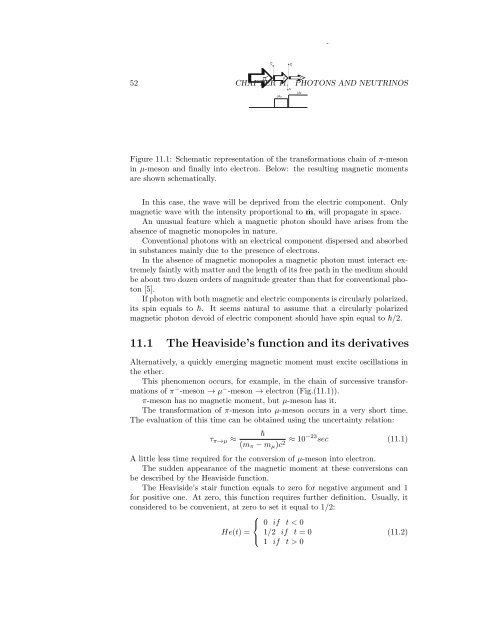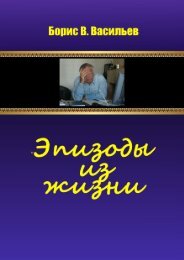VbvNeuE-001
Boris V. Vasiliev About Quantum-Mechanical Nature of Nuclear Forces and Electromagnetic Nature of Neutrinos
Boris V. Vasiliev
About Quantum-Mechanical Nature of Nuclear Forces
and Electromagnetic Nature of Neutrinos
Create successful ePaper yourself
Turn your PDF publications into a flip-book with our unique Google optimized e-Paper software.
-<br />
<br />
~ ~ <br />
<br />
-<br />
52 CHAPTER 11. -<br />
<br />
e<br />
PHOTONS AND NEUTRINOS<br />
<br />
e<br />
<br />
Figure 11.1: Schematic representation of the transformations chain of π-meson<br />
in µ-meson and finally into electron. Below: the resulting magnetic moments<br />
are shown schematically.<br />
In this case, the wave will be deprived from the electric component. Only<br />
magnetic wave with the intensity proportional to ṁ, will propagate in space.<br />
An unusual feature which a magnetic photon should have arises from the<br />
absence of magnetic monopoles in nature.<br />
Conventional photons with an electrical component dispersed and absorbed<br />
in substances mainly due to the presence of electrons.<br />
In the absence of magnetic monopoles a magnetic photon must interact extremely<br />
faintly with matter and the length of its free path in the medium should<br />
be about two dozen orders of magnitude greater than that for conventional photon<br />
[5].<br />
If photon with both magnetic and electric components is circularly polarized,<br />
its spin equals to . It seems natural to assume that a circularly polarized<br />
magnetic photon devoid of electric component should have spin equal to /2.<br />
11.1 The Heaviside’s function and its derivatives<br />
Alternatively, a quickly emerging magnetic moment must excite oscillations in<br />
the ether.<br />
This phenomenon occurs, for example, in the chain of successive transformations<br />
of π − -meson → µ − -meson → electron (Fig.(11.1)).<br />
π-meson has no magnetic moment, but µ-meson has it.<br />
The transformation of π-meson into µ-meson occurs in a very short time.<br />
The evaluation of this time can be obtained using the uncertainty relation:<br />
τ π→µ ≈<br />
<br />
(m π − m µ )c 2 ≈ 10−23 sec (11.1)<br />
A little less time required for the conversion of µ-meson into electron.<br />
The sudden appearance of the magnetic moment at these conversions can<br />
be described by the Heaviside function.<br />
The Heaviside’s stair function equals to zero for negative argument and 1<br />
for positive one. At zero, this function requires further definition. Usually, it<br />
considered to be convenient, at zero to set it equal to 1/2:<br />
⎧<br />
⎨<br />
He(t) =<br />
⎩<br />
0 if t < 0<br />
1/2 if t = 0<br />
1 if t > 0<br />
(11.2)












